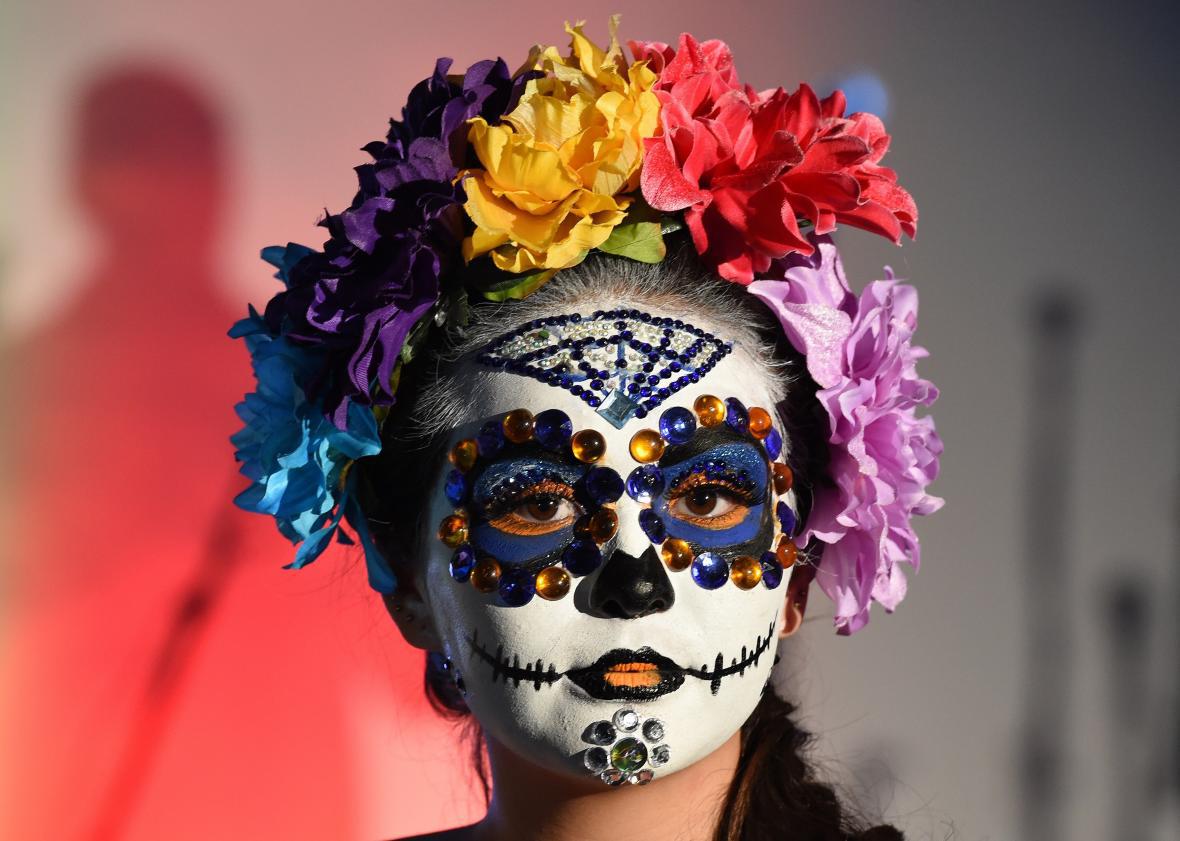This post originally appeared in Inc.
The Saint Arnold Brewing Co. in Houston got its start in 1994, nearly a decade before the United States craft beer boom. Since then, the small business has developed a creative way of standing out from the pack, thanks to the talents of local artist Carlos Hernandez, who specializes in paintings and prints about the Mexican holiday, Day of the Dead.
Day of the Dead, observed from Oct. 31 through Nov. 2, is a time for friends and family to gather together to remember and pray for their deceased loved ones. Festive items like marigolds and sugar skulls are offered up on altars, and celebrants frequently dress up in costume and paint faces.
Saint Arnold has celebrated by creating a beer called Santo, which is the Spanish word for “saint.” The black, light-bodied beverage is marketed to “pair with a plate of enchiladas.” Hernandez designed the label, which features a skull on a red background. He also designs posters for the brewery’s “art cars,” which advertise its beer brands in the streets of Houston.
“Santo is a complete departure from our normal branding, [and] that’s intentional,” says Lennie Ambrose, the marketing and events director at Saint Arnold. He says the sales team pushes Santo the hardest around the Day of the Dead and Cinco de Mayo, another Mexican holiday.
While the brewery typically develops its recipes before artwork is designed, this beer was developed afterward to match the theme. The strategy has seen no small success: With sales seeing double-digit growth annually, Santo has become the company’s fastest-growing product since launching in 2011.
“It reaches a wide audience—especially in a city like Houston because it’s extremely diverse and multinational,” said Ambrose.
Saint Arnold isn’t the only company that recognizes the spending potential of Day of the Dead. Central Market, a retailer in Austin, Texas, puts on free puppet shows, dance performances, and a parade to celebrate. It partners with Academicos da Opera (Austin Samba School) and Las Monas de San Antonio, a performance group.
Kraft foods features Day of the Dead recipes on its website, such as shortbread cookies and a “flowery cake of the dead.”
Of course, e-commerce sites such as Etsy and Amazon retail skull masks, mini-altars, banners, rose crown headbands, and “tiny coffin beads,” among other seasonal wares. Related merchandise can also be found through mainstream sellers like Target and Cost Plus.
Perhaps contrary to popular belief, the Latin American community typically views the holiday to be joyful—not a time of doom and gloom.
“This holiday relates to the celebration of those who were part of our lives, and continue to be a part of our lives. That’s in conflict to the corporate understanding of death,” says Rochelle Newman-Carrasco, the chief Hispanic marketing specialist at Walton Isaacson, a marketing agency.
She notes that Day of the Dead is still a largely “missed opportunity” for American brands. Companies that sell makeup and tissues, for instance, stand to benefit from better targeting the Latin American community, because face-painting is a highly popular way of celebrating.
It’s also essential that companies remain sensitive to the fact that Day of the Dead belongs to a specific culture. Rather than “co-opting” this, Newman says, it may be a good idea to leave the ads—and the imagery—to the experts.
“You celebrate by looking at how you can put your brand into the lifestyle of those who are creating, like local artists or independent filmmakers,” she adds. “There’s nothing worse than taking something you don’t understand and messing with it on a commercial level.”
